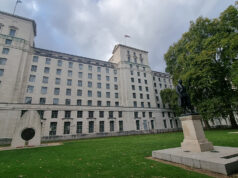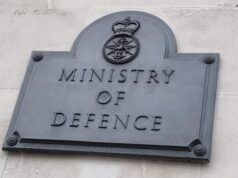The UK has carried out a major national exercise to test its response to a large-scale incident involving chemical, biological, radiological, nuclear or explosive materials, Counter Terrorism Policing stated.
The exercise, conducted between 4 and 7 November in Papworth, Cambridgeshire, brought together up to 600 personnel from the emergency services, armed forces and partner agencies. It simulated a complex incident involving the malicious release of hazardous material and improvised explosive devices to test coordination, communication and technical response under high-threat conditions.
According to Counter Terrorism Policing, the event was “highly successful,” demonstrating strong response capabilities and supporting the government’s Plan for Change and UK Resilience Action Plan. The exercise formed part of the annual national CBRNE training series jointly delivered with the Ministry of Defence.
Deputy Assistant Commissioner Jon Savell, who oversees specialist operations for Counter Terrorism Policing, said collaboration across agencies remains essential. “Our ability to respond to complex threats depends on the strength of our partnerships. The close working relationship between Counter Terrorism Policing, local policing and our partner agencies is not just about systems and procedures, it’s about trust, communication and a shared purpose,” he said. “Exercises like this ensure we continue to build that collaboration so we can respond swiftly and effectively when it matters most to keep the public safe.”
Security Minister Dan Jarvis said the training reinforced national preparedness. “Joint training is vital to ensure that our policing partners, armed forces and emergency responders can work seamlessly together to protect the British public from a range of threats, including chemical, biological and radiological incidents,” he said. “Their ongoing preparation ensures that when an incident happens, the UK can respond rapidly, effectively and with confidence.”
Minister for the Armed Forces Alistair Carns praised the military’s contribution. “Our outstanding British Armed Forces bring deep expertise, demonstrating their critical role in defending the homeland. Exercises like this show how the military is integral to keeping Britain safe and secure at home,” he said.
Counter Terrorism Policing stated that while the use of CBRNE materials in an attack remains less likely than conventional terrorism, such threats remain a priority under the National Risk Register. Regular exercises of this scale are designed to ensure the UK’s emergency response remains ready, integrated and capable of saving lives in a real-world crisis.














Hopefully, the emergency services will receive new equipment to rectify any shortfalls the exercises might expose.
I know little about the NHS side, or the Police, who I recall have CBRN elements at Royston.
On the military side, I’d be interested in which military and MoD elements contributed.
MoD maintains the NARO, and the RAF Regiment, when it had the lead for CBRN, had elements on VH readiness as part of the HRF to deploy at short notice.
I assume now that will come from 28 RE, the CBRN specialists, and elements of the RS, RE, and RLC who have certain Sqns whose role includes short notice respone to UK incidents, whether CT or CBR,N, via a request to the SJC from local
authorities.
Add to these experts from the AWE, Porton Down, and DCBRN Centre Winterbourne Gunner could attend, we have plenty of expertise here.